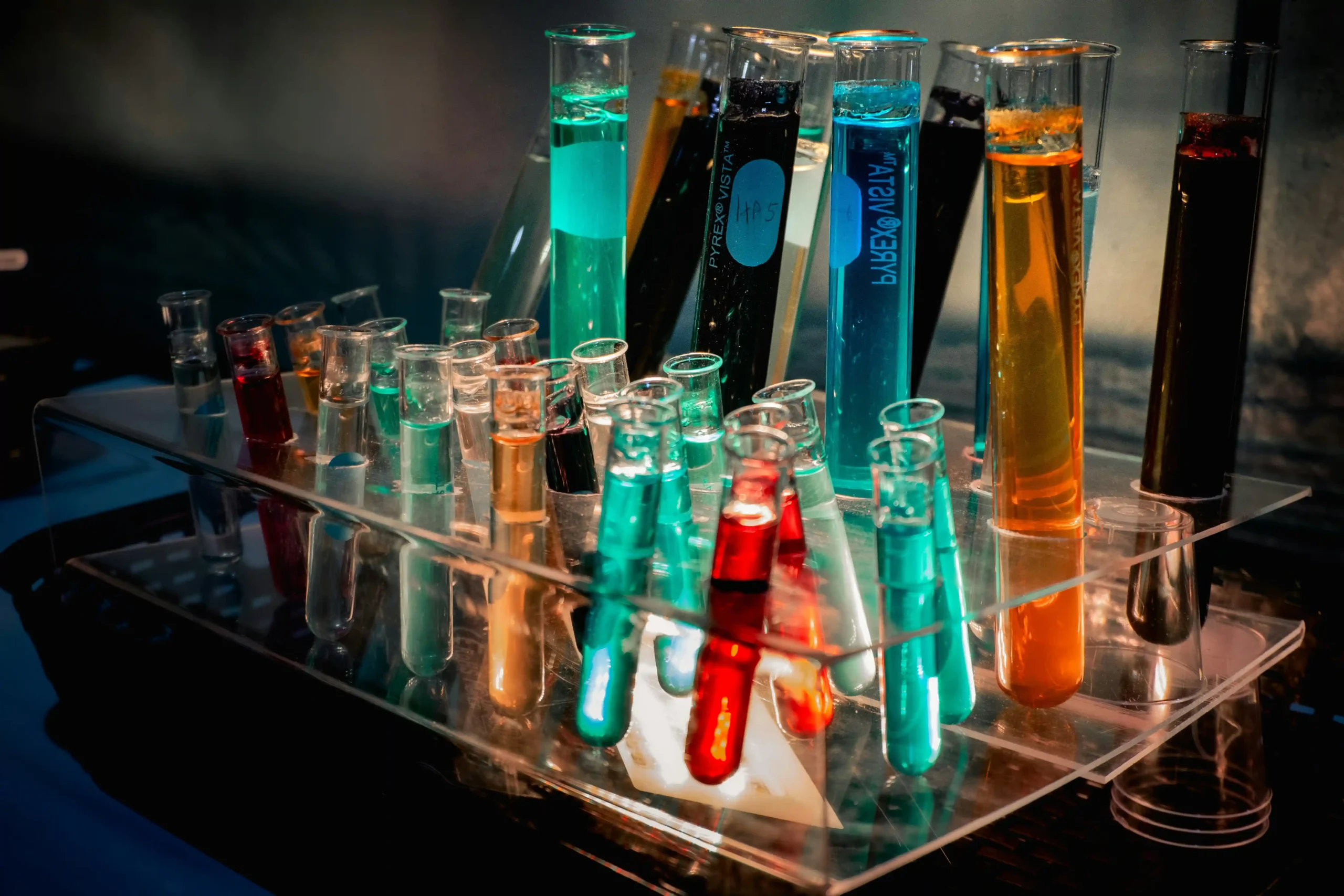Organic Chemistry Basics: The Molecular Blueprint for 2025 Innovation
Did you know that 95% of all known compounds contain carbon? From life-saving pharmaceuticals to biodegradable plastics, organic chemistry basics form the backbone of modern science and industry. As we navigate 2025, understanding these principles isn’t just for lab coats—it’s essential for entrepreneurs shaping sustainable startups, marketers promoting cutting-edge products, and innovators redefining global challenges. This guide unpacks organic chemistry basics with actionable insights, from carbon’s unique bonding behavior to real-world applications in tech, medicine, and eco-friendly solutions. Whether you’re designing a green energy startup or optimizing a skincare line, these fundamentals will become your secret weapon.
Why Organic Chemistry Basics Matter in 2025
The Carbon Revolution: Carbon’s ability to form four covalent bonds makes it the ultimate molecular architect. In 2025, this versatility fuels breakthroughs like carbon-capture textiles and lab-grown meat. Startups like GreenCarbon Tech leverage these basics to create CO2-absorbing fabrics, proving that atomic-level knowledge drives macro-level impact.
Health & Wellness Synergy: Organic chemistry basics underpin mRNA vaccines and personalized nutraceuticals. For instance, Pfizer’s latest antiviral drugs rely on chiral molecule synthesis—a concept rooted in spatial arrangement taught in Chem 101. Entrepreneurs can exploit these principles to develop bespoke health solutions.
Sustainability Imperative: With 68% of consumers prioritizing eco-friendly purchases (2025 Nielsen Report), understanding biodegradable polymers or enzyme-driven reactions isn’t optional. Brands like Patagonia now use polyester derived from plant-based ethylene—a direct application of alkene chemistry.
Tech Convergence: AI-driven molecule design platforms, such as ChemAxon, use organic chemistry basics to simulate reactions 10,000x faster than traditional methods. For app developers, integrating these tools could democratize R&D for small businesses.
Core Concepts: Mastering Carbon’s Playbook
Structure Dictates Function: A molecule’s shape—like the hexagonal benzene ring—determines its properties. Consider THC vs. CBD: nearly identical structures, vastly different effects. Innovators in cannabis tech use this knowledge to engineer targeted therapeutic compounds.
Functional Groups—The “DNA” of Reactions: Hydroxyl (-OH) or carbonyl (C=O) groups act as reaction hotspots. Startups like BioForm Labs manipulate ester groups to create compostable packaging, replacing 250 million tons of annual plastic waste.
Isomerism & Innovation: Thalidomide’s tragic history highlights how mirror-image molecules (enantiomers) can have opposite effects. Today, 3D-printed chiral catalysts help pharma companies avoid such pitfalls while reducing costs by 40% (2025 PharmaTech Journal).
Mechanisms Over Memorization: Learning electron movement in reactions—like nucleophilic substitution—empowers problem-solving. For example, Solugen’s bioengineered enzymes use these mechanisms to break down industrial toxins sustainably.

2025 Trends Reshaping Organic Chemistry
Green Chemistry Dominance: The global green chemistry market will hit $280B by 2026 (Grand View Research). Startups like Pivot Materials use microwave-assisted reactions to synthesize adhesives with 90% less waste.
AI-Powered Synthesis: Tools like Synthia predict reaction pathways for novel materials, slashing development timelines. One biotech firm used it to design a malaria drug candidate in 3 months instead of 3 years.
CRISPR Meets Catalysis: Gene-edited enzymes now catalyze reactions at industrial scales. Codexis engineered an enzyme that converts plant waste into jet fuel—saving airlines $1.2B annually in carbon taxes.
Blockchain for Supply Chains: IBM’s Food Trust tracks palm oil’s organic chemistry from farm to product, ensuring ethical sourcing. This transparency boosts consumer trust and aligns with 2025 EU sustainability mandates.
Tools Every Innovator Needs
Cheminformatics Software: Platforms like ChemDraw let non-chemists visualize molecules and predict properties. A skincare startup used it to formulate a stable vitamin C serum with 2x longer shelf life.
Open-Access Databases: PubChem and ChemSpider offer free access to 100M+ compound datasheets. Marketers analyzing ingredient lists can instantly verify claims like “paraben-free” or “vegan-friendly.”
Modular Lab Kits: Companies like BioBricks provide DIY organic chemistry kits for prototyping bio-based materials. A Nairobi startup used one to develop algae-based leather in 6 weeks.
Collaborative Networks: The American Chemical Society connects startups with academic labs for joint R&D. One partnership yielded a solar paint that generates energy while absorbing CO2.
Ethics & Organic Chemistry in 2025
Biopiracy Concerns: As companies patent naturally derived molecules (like a rainforest plant’s antioxidant), watchdogs demand equitable profit-sharing. New blockchain frameworks aim to credit indigenous knowledge in chemical discoveries.
AI Bias Risks: Machine learning models trained on Western data may overlook traditional remedies. Startups like HerbGenix are building inclusive databases to capture global phytochemical diversity.
Regulatory Shifts: The FDA’s 2025 guidelines require full disclosure of synthetic fragrance components. Perfume brands using organic chemistry basics now highlight “transparent scent architecture” as a USP.
Circular Economy Integration: Adidas’ Futurecraft.Loop sneakers, made from 100% recyclable TPU, exemplify how cradle-to-cradle design relies on polymerization fundamentals.
From Lab to Launch: Success Stories
Bolt Threads’ Mycelium Leather: By studying fungal cell wall chemistry, this startup created a leather alternative adopted by Stella McCartney and BMW. Their secret? Optimizing polysaccharide cross-linking for durability.
Modern Meadow’s Biofabrication: Using genetically engineered yeast, they produce collagen for lab-grown leather without animals. Their process hinges on protein folding principles from organic chemistry.
LanzaTech’s Carbon Recycling: This unicorn converts industrial emissions into ethanol via specialized catalysts. Their tech, rooted in gas-phase reaction mechanics, prevents 200K tons of CO2 annually.
Colorifix’s Microbial Dyes: By programming bacteria to secrete pigments, they eliminate toxic dye chemistry. Founders credit their success to mastering chromophore synthesis pathways.
Organic chemistry basics are no longer confined to textbooks—they’re the launchpad for 2025’s most transformative ventures. From AI-enhanced synthesis to ethical biomaterials, every innovation begins with carbon’s four little bonds. As industries pivot toward sustainability and personalization, these principles will separate the disruptors from the disrupted. Ready to rewrite the rules? Start by sketching your next big idea… with a molecular structure. Share your vision with #ChemInnovators2025 and let’s build a smarter future—one atom at a time.

Your article helped me a lot, is there any more related content? Thanks!